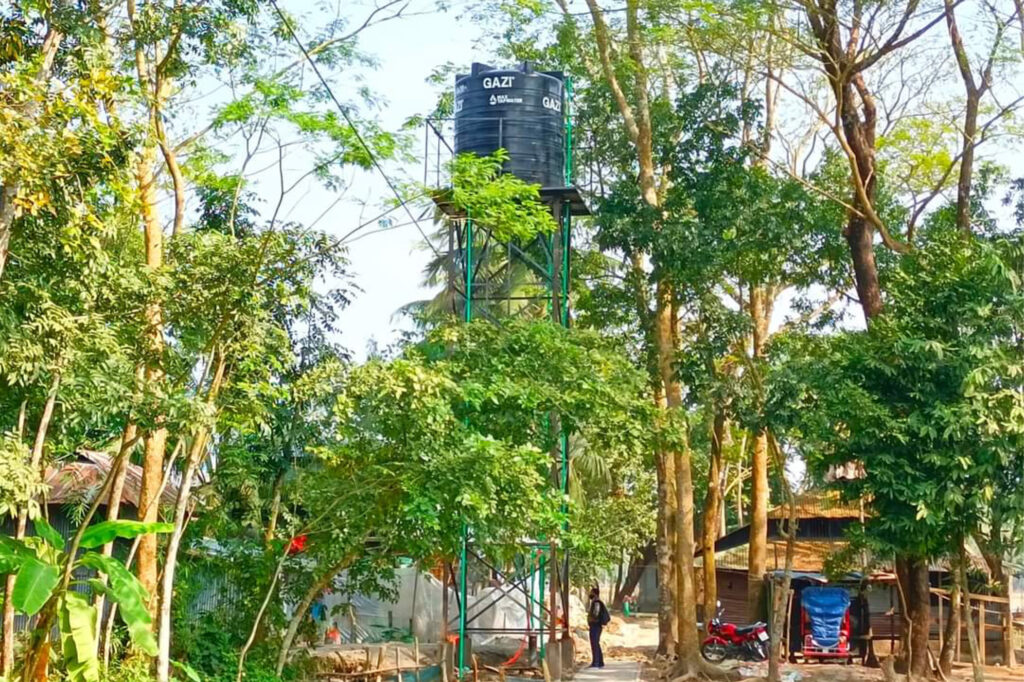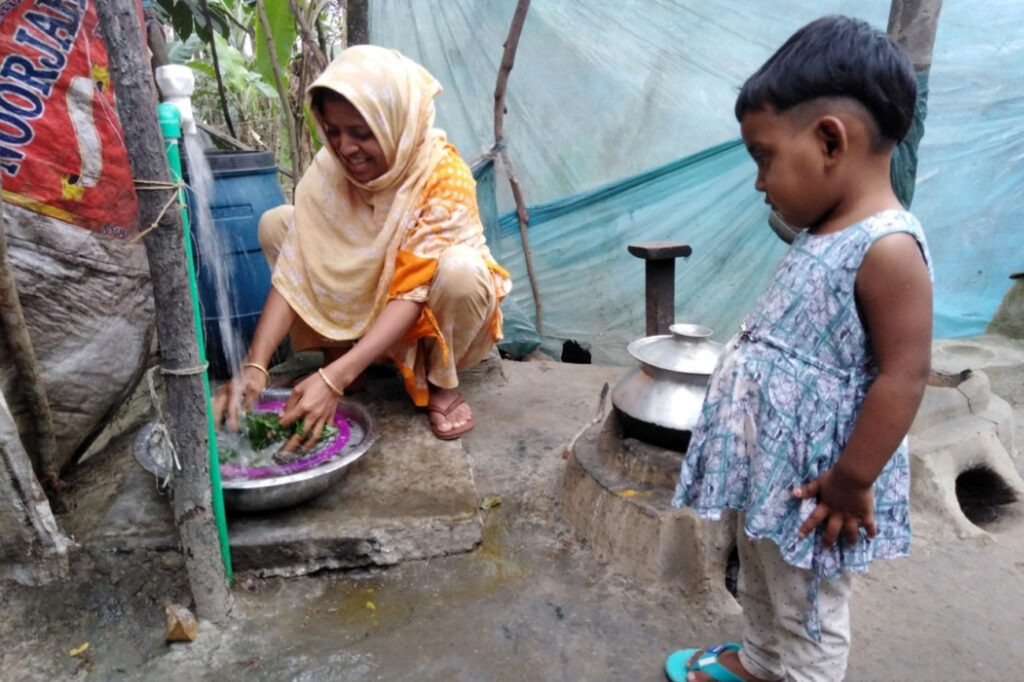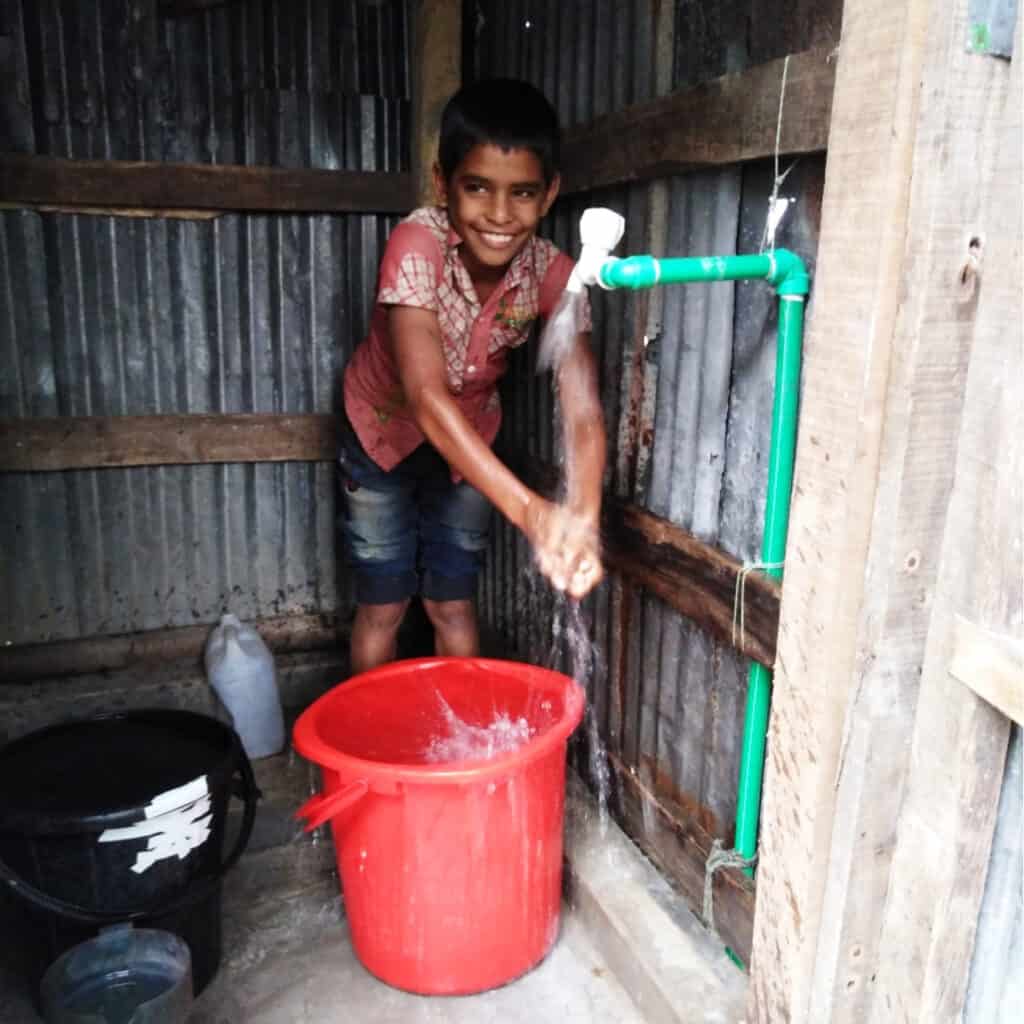Update Max Tap Water: a running start
Our entrepreneurial project in Bangladesh is off to a running start. After all permits were completed, various existing installations were transferred to the new social enterprise to be set up, which already has 4600 customers.

4600 customers and more
In the first months of 2022, we will set up the Max TapWater project structure. An important milestone was the approval of the NGO Affairs Bureau of the national government, a body that closely monitors all foreign donations to Bangladesh. Only with their permission is it possible to hire staff or develop activities.
In the same period, twenty installations built in 2021 were transferred to Max Social Enterprise and put into use. 1,041 connections have been made to this, so that 4,600 customers now benefit from access to tap water in their own household. In addition, there are still 88 applications for a connection that will be realized after Ramadan and the subsequent Eid holidays
Test and improve
The turnover achieved in March was somewhat lower than expected. This can be explained by the fact that the installations only supplied water during the month, while we had hoped to be fully operational at the beginning of March.
During the test deliveries, however, it became apparent that eight installations still needed some adjustment and repair and that the tanks of five installations needed better cleaning. It is expected that in the course of April all systems will be operational and all connections completed.


And then expand
The findings gained during the construction of these twenty installations, as well as the underlying business model and the roll-out of their connections, serve as the basis for the installations that we will deliver in 2022.
For example, we now know that demand is fueled from the moment construction has started. People are increasingly willing to pay for tap water when they see a water installation being built in their village and they notice that their neighbors are getting a connection.
We have also learned how to deal with large customers, such as schools and companies. By analyzing the water consumption per type of customer and extrapolating the household rates, we were also able to set understandable and acceptable rates for these groups.
Looking ahead
The project team is currently selecting possible locations for the installations to be built during the year. That selection starts with a long list, based on criteria such as company viability, socio-demographic characteristics, technical feasibility and legal matters. Political lobbying is also part of the selection process.
The project team also spends a lot of time in discussions with (local) authorities to ensure support for the project but also to boost demand through this channel. Over time, all these criteria lead to a shortlist and then to a final choice of construction sites. After the rainy season (September), the construction of the installations will start.

Max Tapwater
In Bangladesh, 73 million people still do not have access to water at home. As a result, especially women and girls spend at least 2 hours a day to fetch water. That water is often polluted with various diseases and malnutrition as a result.
Our mission in this project is therefore: easy, safe and affordable water at home. We will do this in an enterprising way by constructing mini water networks that will pay for themselves. This way we get a flywheel effect!
May be you want to read these updates too:
Bushra’s personal story
We’ve supported the Max Tapwater project to realise 80 water networks in different locations in Bangladesh since 2022. Aside from direct access to clean water and the creation of jobs, the project…
Read moreTwenty new water grids in Bangladesh
2023 was a productive year for the Max Tapwater project in Bangladesh. The number of water grids has doubled, bringing many more advantages than just clean water from the tap.
Read more